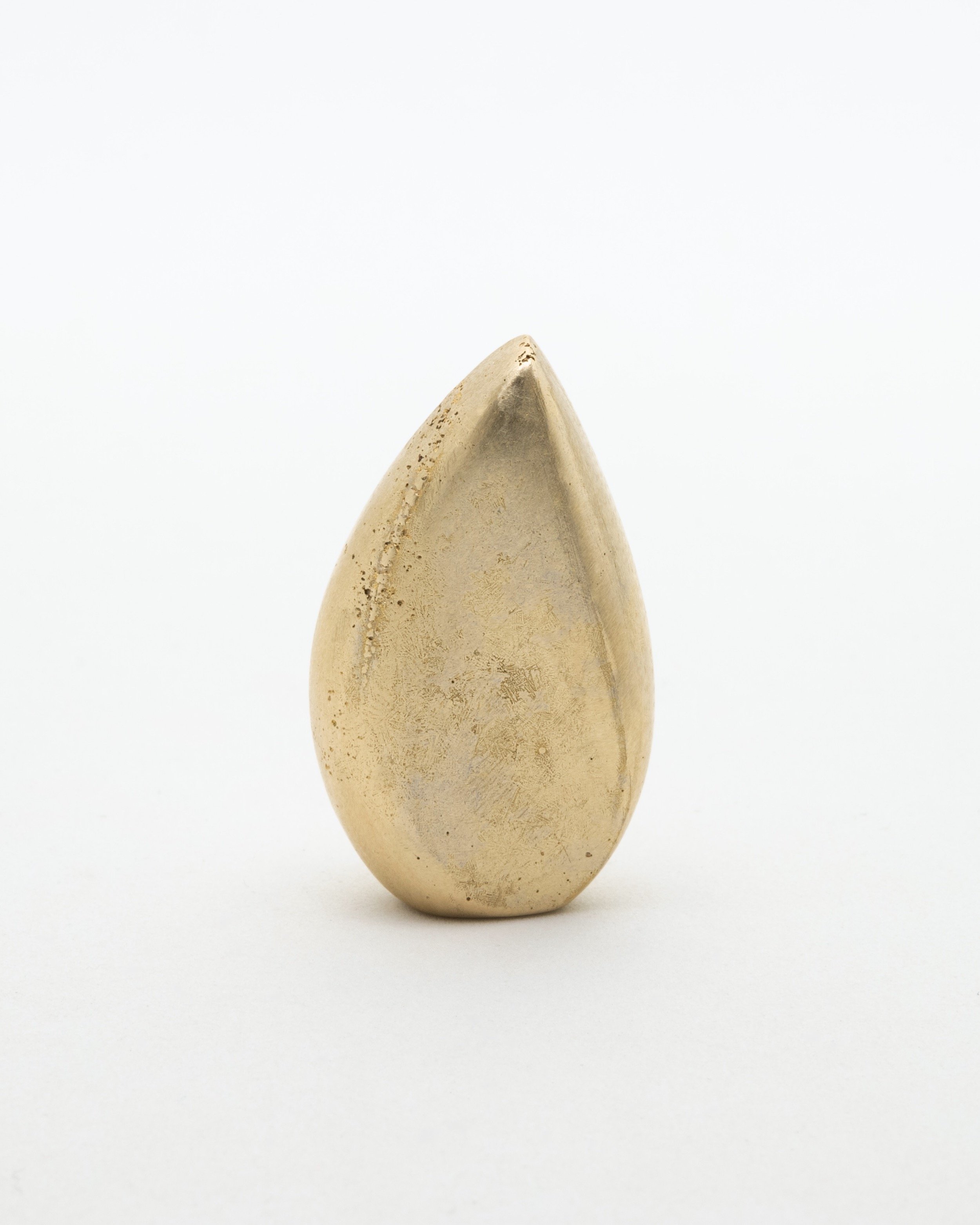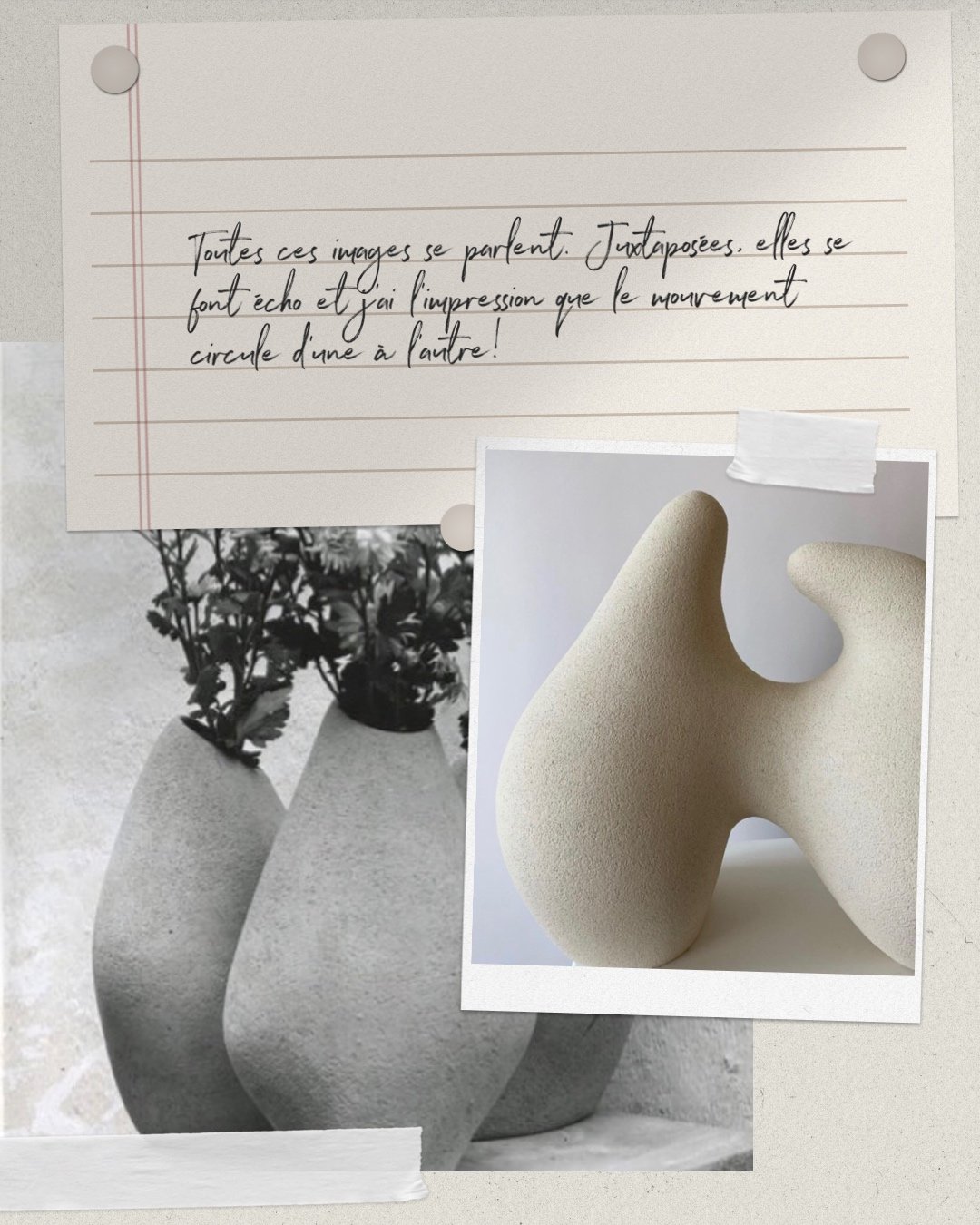It all started here
What inspired the collection Soupirs
It all started with Forme 01. It's the one I made first and which led to all the others in the collection Soupirs. I needed to try out this play of curves and hollows in a slightly larger format first. (It's the shape in the photo on the left below.)
A sculpture first created in wax, letting the material talk no matter what my first intentions and desires were. They got lost somewhere in the process, but their essence remain...
I mull over ideas for a long time before trying to put them into practice. I collect images and references for months before settling down to sculpt. But when I start, it's the wax that does the talking.
As you may already know, my favorite technique is lost wax because it allows me to create jewelry with much more organic and rounded shapes. And sometimes, even if I have a very clear idea of what I want to do, that's not what I get. Because I find something else that speaks to me more in the moment, holds my attention and commands me (yes, yes!) to take a different direction.
It is with this openness and emphasis on what is there that the collection Soupir was created. This way of working comes to me from dance, where we work a lot with improvisation and enthusiastically welcome surprises and the unexpected.
Among the images collected are beautiful sculptures by Barbara Hepworth, Valentine Schlegel, Hermine Bourdin, Simone Bodmer-Turner and Hanna Englund. Pioneers as well as contemporary artists clearly influenced by the first two. The sensual elegance of their work is powerful. I find their curved, hollow and supple forms absolutely fascinating. It was with these images in mind and my usual desire for fluidity and movement that I worked, trying from afar and without pretension to echo their approach.
As some of the pieces in collection Esquive already have openings in their centers, I wanted to explore hollows without making holes. Barely opening spaces, like slightling opening a door. Small detours and lossenings like puffs of air.
—
* What is the lost wax technique? A shape is first sculpted in wax, then cast in metal. The technique gets its name from the fact that when the wax model is cast, it melts and "disappears" under the heat of the liquid metal that takes its place. To be able to reproduce the pieces (we don't carve each piece one by one), we make molds from which we draw new waxes that will be used to cast the shapes in brass, sterling silver or solid gold.
—
Top left, Forme 01, which I haven't completely polished. I like the roughness on some of the surfaces.
Above right, works by Barbara Hepworth and Hermine Bourdin.
Bottom left, works by Hanna Englund, Simone Bodmer-Turner, Malene Knudsen and Valentine Schlegel.
Bottom right, works by Valentine Schlegel and Hermine Bourdin.
published Nov. 23, 2023




